Can cheap road helmets match up to more expensive lids? We look at the key differences
A helmet is a vital piece of cycling kit, providing crucial protection for your head - but how do budget and premium models compare?

The concept of a ‘cheap’ bike helmet may seem somewhat incongruous. After all, if there’s one cycling accessory you can’t afford to fail, it’s your helmet.
But affordability and safety don’t have to be conflicting forces. Any helmet from a reputable brand, no matter its price tag, will be required to pass tests applicable to the country it’s sold in. This doesn’t mean that every helmet is as safe as the next but it should mean that a helmet, whether it costs £50 or £250, when worn correctly will do its job if you have an accident. So if this is the case, what are the differences between the best budget cycling helmets and ones that are far more expensive?
The best cycling helmets with a premium price tag, say those north of £100/$150, are often lighter, with better ventilation. If they’re among the best aero helmets claiming aerodynamic benefits, these will have been developed at quite the cost, using wind tunnel testing. Achieving shapes that increase venting and reduce drag requires a more expensive manufacturing process. Add in a superior finish, with better quality padding and straps and you’re starting to see how such a discrepancy in price between a budget helmet and top-tier offering can arise.
But the trickle-down technology that is seen throughout the cycling industry is also on show here. Budget helmets can be heavily vented. They can also be aero. They might even include additional safety measures such as a Multi-Directional Impact Protection (MIPS) lining to help guard against brain injuries caused by rotational impacts.
To help you assess the difference between ‘cheap’ and ‘expensive’ bike helmets we’ll go into a little more detail, looking at a number of areas of concern, with specific ‘budget’ versus ‘expensive’ model comparisons for each section.
Ventilation
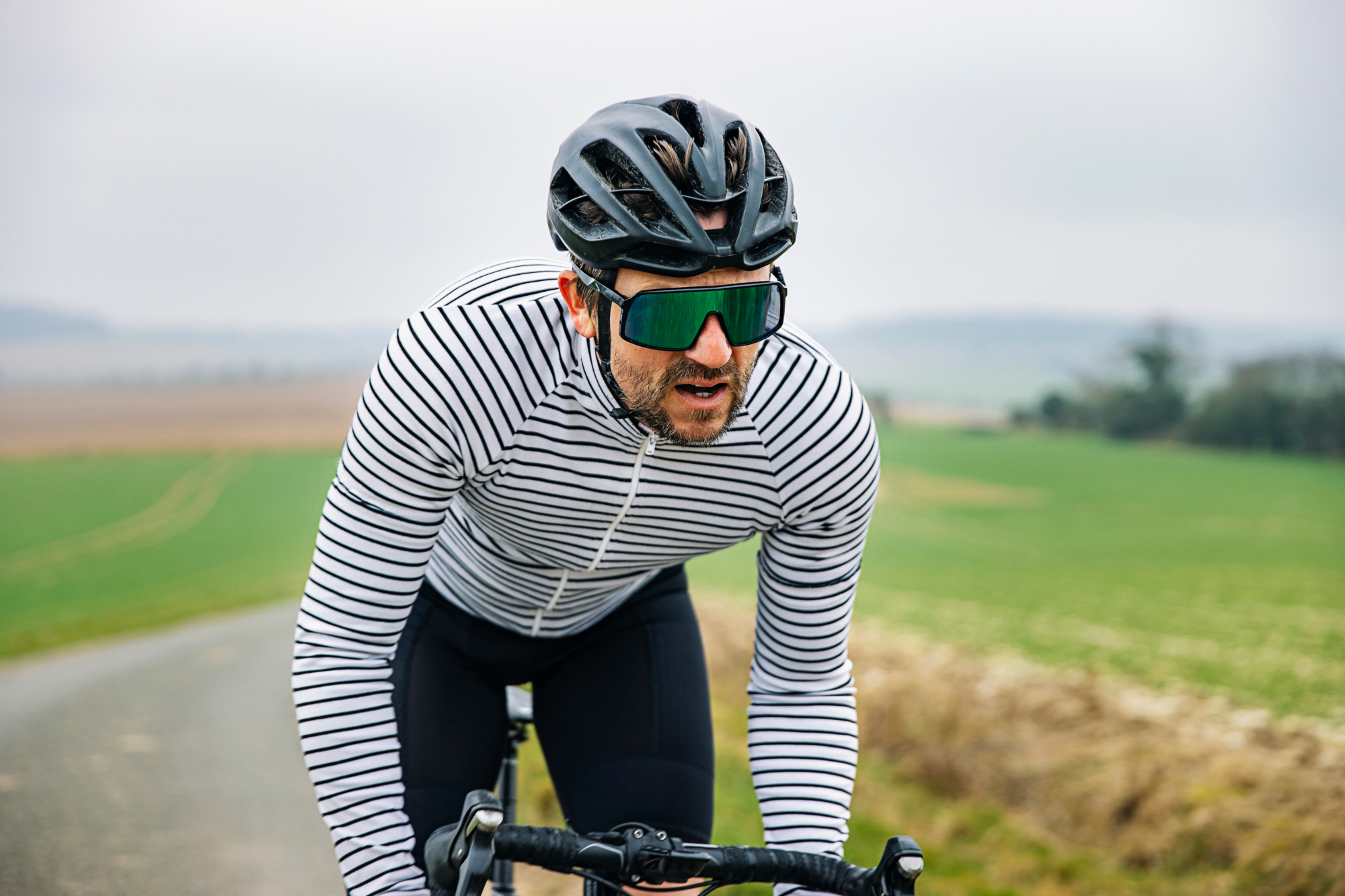
While almost all road bike helmets will offer some kind of ventilation to prevent your head from reaching boiling point, there are those that do a far better job than others.
At the expensive end of the market, you’ll find plenty of choice, with most well-known brands offering a helmet dedicated to keeping you cool. These will not only have plenty of vents on the outer shell of the helmet but also a thoughtfully designed interior, with channels to promote air flow. It’s also likely that the structural integrity of the helmet will have been designed to maximise impact protection while still allowing for lots of large vents.
If you’re on a more restricted budget you’ll have less choice. The trickle down technology we mentioned earlier, as the name suggests, takes a while to permeate the lower end of the market. This means you won’t get the most up-to-date ventilation from a budget lid. If you’re looking for a hot-weather helmet on the cheap, aim for large, well-positioned vents that will allow air to enter, and then leave; so venting at both the front and rear is vital.
Ventilation: Specialized S-Works Prevail III vs dhb R3-0 Road
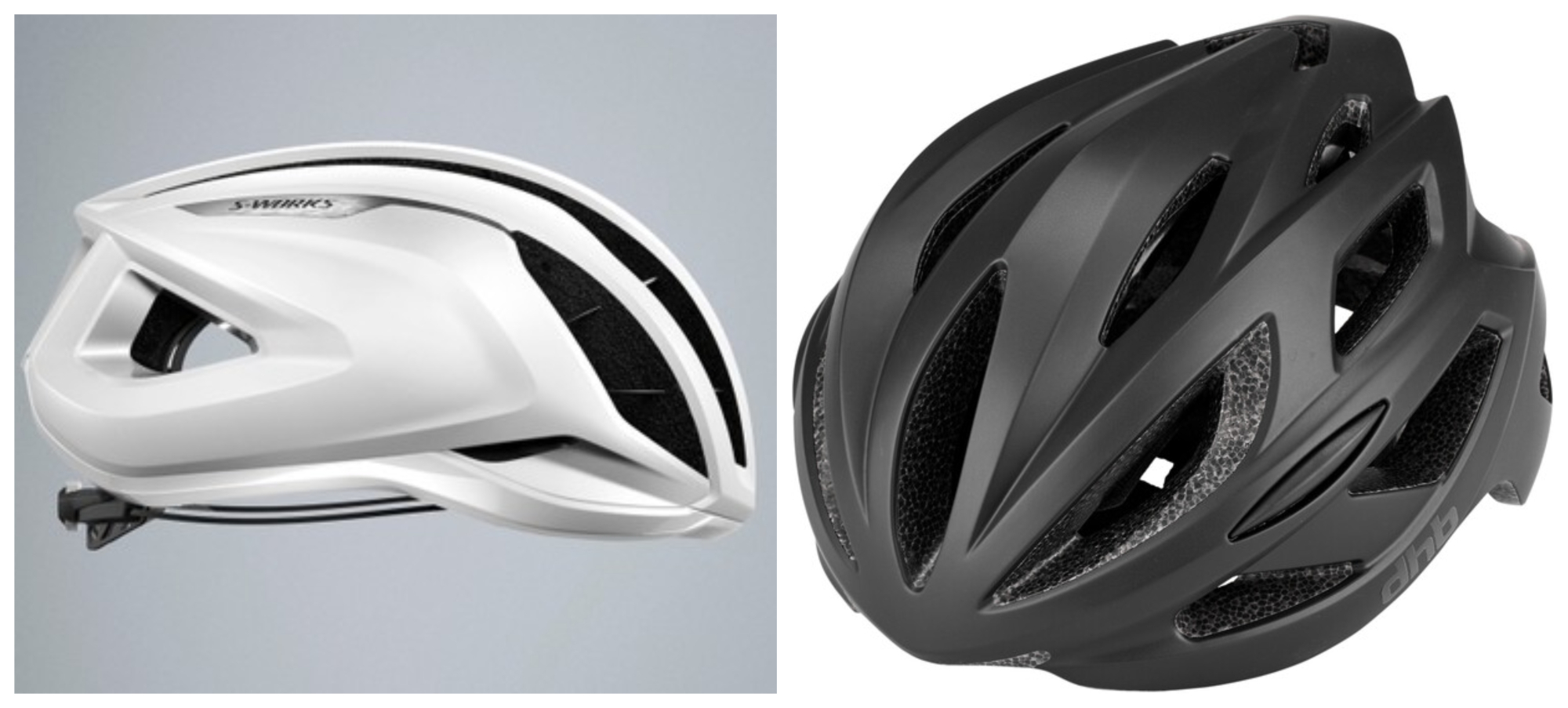
The latest Specialized Prevail III has challenged conventional helmet design in the pursuit of a cooler helmet. It uses a carbon cage, called AirCage, to deliver greater ventilation - the surface area providing ventilation has increased by over 20% from the previous model. The cage acts as a ‘suspension bridge’ to distribute impact forces during an accident (the helmet received a 5 star Virginia Tech safety rating) but vitally allows for more, and much larger, vents, greatly improving air flow. Other advances found in the latest Prevail include MIPS technology that’s been integrated into the helmet’s padding. But research, design and development don't come cheap, and the Prevail III has a price tag to prove it.
Despite being £200 cheaper than the Specialized helmet, dhb’s R3-0 road helmet offers plenty of ventilation. The twenty large vents are designed to promote air flow, and there’s also sweat wicking pads to deal with moisture management. As for safety, the helmet features a recycled EPS impact liner. Unlike some ‘cheaper’ helmets it’s also offered in plenty of colours and two size options.
Aerodynamics
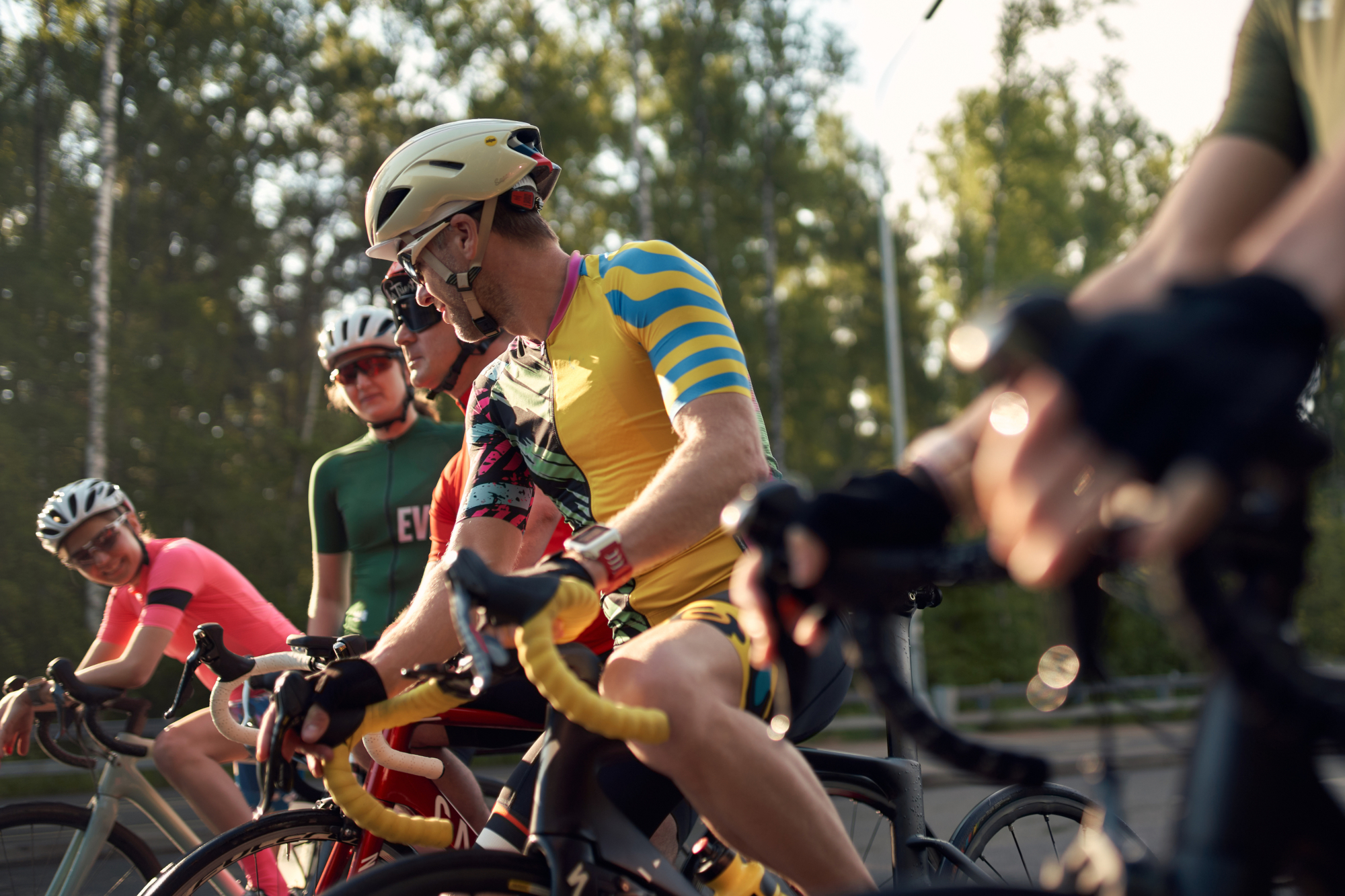
It wasn’t so long ago when aerodynamic helmets were the preserve of the time trialist. But now saving watts has become a measure used across disciplines, used by recreational cyclists as well as the pros. Many more road bikes have been ‘aerofied’ as a result, and with it other elements of a cyclist kit too. Enter the aero road helmet.
It’s no surprise that a helmet creates drag. However, the industry’s understanding of just how much, and how to best combat it, has become more advanced. It turns out that while the heavily vented road helmet keeps you nice and cool, it also slows you down. Today’s aero helmets attempt to strike a balance between a shape which cuts through the air, while still allowing your head to breathe. That said, even aero helmets that claim superior venting are likely to be heavier and sweatier than a traditional road helmet that’s less concerned with aerodynamics.
At the expensive end of the spectrum you’ll again have plenty of choice. It’s commonplace for brands to offer a dedicated aero helmet, with a smaller number of vents but a measurable reduction in drag. And ‘measurable’ is a big part of the reason for the lofty price tags. In simple terms, the relevant software used to create aerodynamic shapes and the subsequent wind tunnel testing to determine their effectiveness are costly.
So if it's the R&D rather than the materials that make high-end road helmets expensive, does this prohibit the creation of a more affordable version? Possibly not. While there are certainly far less aero helmets at this end of the market, they do exist. By ‘adopting’ shapes and reducing the number of vents cheaper helmets can offer something similar, albeit without the same level of design and detail or the numbers to back up the aero claims.
Aerodynamics: Lazer Vento KinetiCore vs dhb Aeron
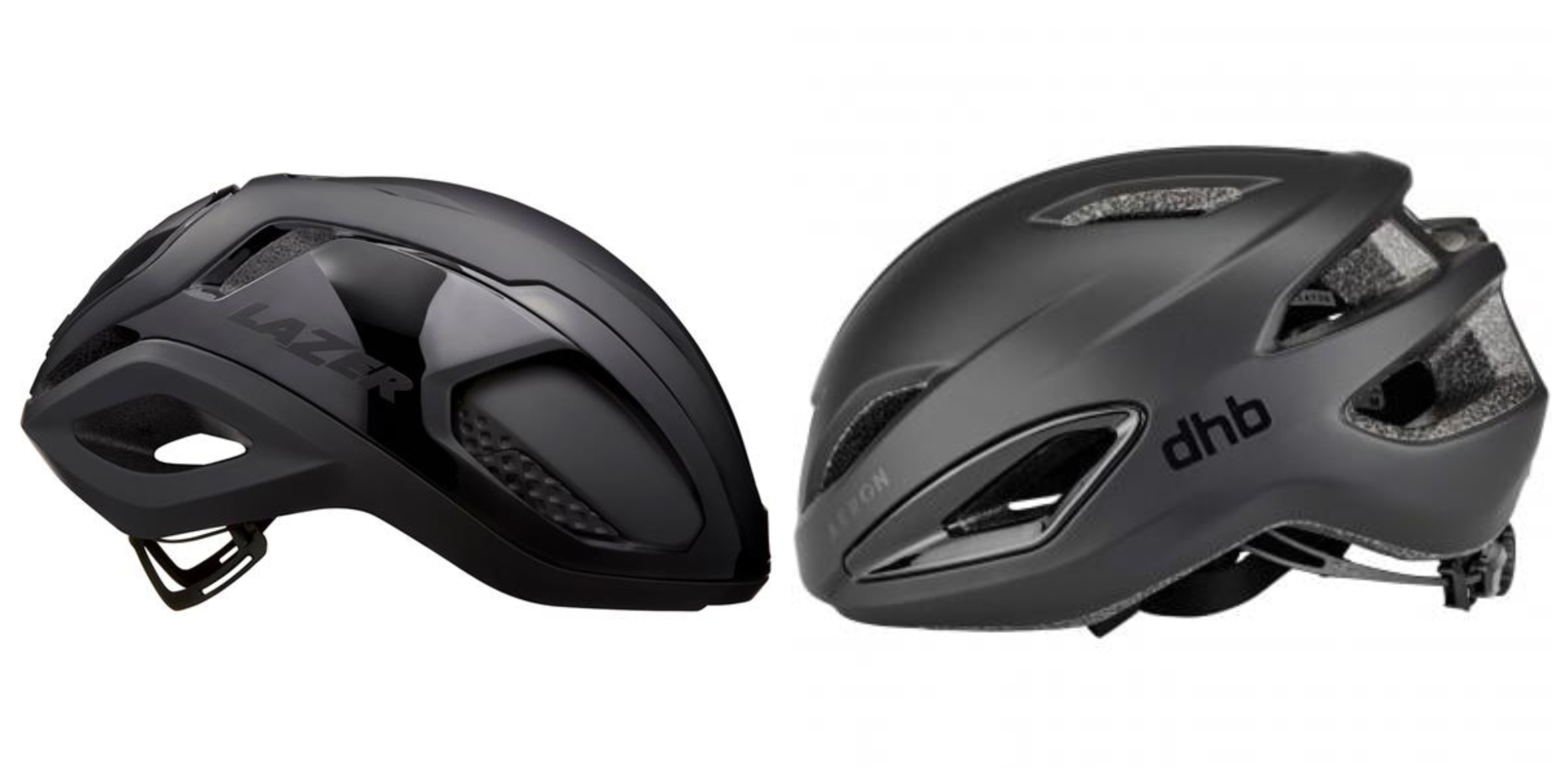
Lazer’s Vento KinetiCore is a good example of an expensive aero helmet that pulls out all the stops in the search for a few saved watts. The Belgian brand has close ties with professional teams, including Jumbo-Visma, and have developed this new lid in conjunction with some of the best riders in the peloton. It’s designed to limit drag thanks to a reduced frontal surface - its 2.3% more aerodynamic than its aero predecessor the Bullet - while ventilation channels help to draw in and then expel hot air to keep the rider cool. It also uses the brand’s proprietary KineticCore technology, which like MIPS, is there to provide protection against rotational impact; it’s received a 5 star Virginia Tech rating for such tests.
A far cheaper alternative is dhb’s Aeron helmet. While it can’t claim to be worn by grand tour stage winners it does use a familiar aero shape; a low profile with a reduced number of vents on the helmet's frontal section. To ensure air flow, it uses what dhb calls its ‘super vent’ side technology, which it claims provides “exceptional cooling”. It’s also pretty lightweight for an aero helmet, with the size medium having a claimed weight of 245g. The more expensive Lazer Vento tips the scales at 290g.
Lightweight

Given that a helmet will be sat on your head, sometimes for many hours, its weight is well worth considering. The best helmet is one that you forget you’re wearing. This is usually achieved by it being both comfortable, due to both design and a good fit for your head shape, and lightweight.
Heavily vented helmets are usually the lightest, while aero helmets tend to be a touch heavier. Of course size influences a helmet’s weight and manufacturers will often reference a claimed weight based on a smaller size. If you need a larger helmet, it’s worth checking to see if a weight is listed in your size. As a rough guide a small or medium helmet that weighs 180-230g is considered light, while those over 300g are seen as heavy. A small or medium helmet that weighs between 240-290g is pretty typical.
So is a helmet’s weight affected by its price tag? Probably not as much as you might think. Premium priced helmets will feature the latest technology, both from a performance and safety consideration; think superior venting or aero properties as well as MIPS or equivalent safety tech. They’re also likely to boast a nicer finish; Kask helmets for example use a faux leather padding on its chin straps.
But none of this detail necessarily makes a helmet light. The EPS material used for the body of the helmet is much the same whether its entry level or top-tier. Of course some premium helmets can choose to focus on reducing weight, using stripped-back straps, buckles and ‘fit’ systems, but if you’re seeking a lightweight lid on a budget, you should be able to find one that works for you.
Lightweight: Kask Valegro vs HJC Atara
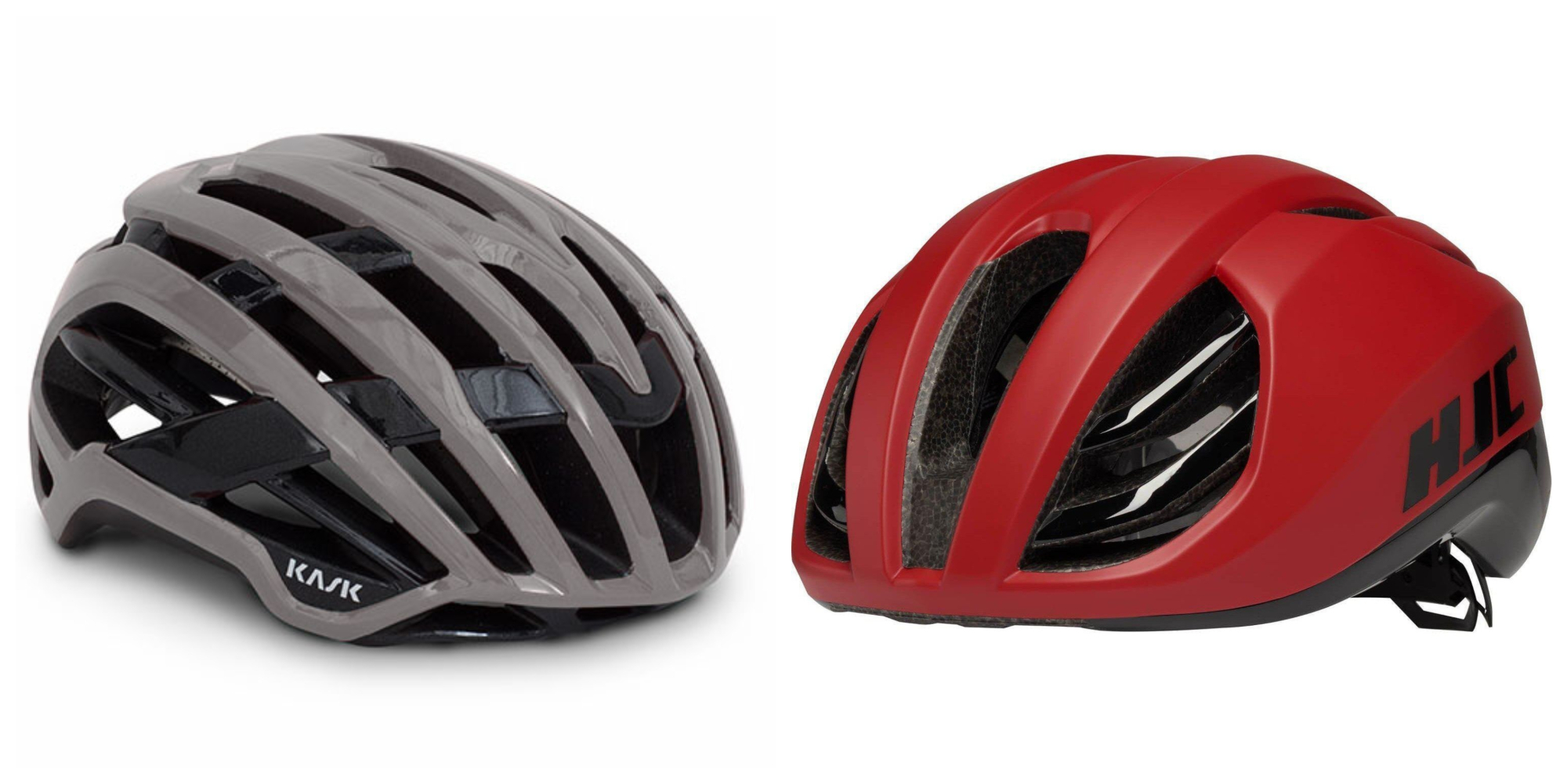
Kask’s Valegro has been one of the lightest helmets available for a number of years now, and it’s likely it remains in the Italian brand’s line-up because of this; a size small has a claimed weight of just 180g. This is achieved largely due to its extreme venting; with 37 holes it's more air than helmet. It also boasts some high-tech padding that’s said to be antistatic, antibacterial and moisture transferring thanks to the use of Resistex carbon.
While we couldn’t find a budget helmet to match the Valegro on the scales, HJC’s entry-level model comes pretty close. The HJC Atara retails for well under £100 yet has a claimed weight of just 210g. It appears to borrow much from the brand’s more expensive helmets - HJC sponsors WorldTour teams AG2R-Citroen and Israel Premier-Tech - including benefiting from its dedicated wind tunnel facility.
Protection

As mentioned earlier, all helmets have to meet the required safety standards of the country they are sold in. In the UK and the EU that means the EN1078 standard, while in the US it's the Consumer Product Safety Commission’s CPSC 1203 standard. But there are also additional levels of protection that can be added, and these are more likely to be found on more expensive helmets that those at the cheaper end of the market.
We’ve mentioned MIPS technology throughout this article but to reiterate its an independently designed system used by various helmet manufacturers to protect against rotational impacts. It achieves this by adding a low-friction layer inside a helmet that allows for multi-directional movement, designed to reduce rotational force to the head and brain during an accident.
In its more basic form it’s a plastic layer that sits between the helmet’s padding and the EPS foam layer. However, newer MIPS systems are now in play, including Air Node. This is designed to be lighter in weight - the traditional MIPS liner adds around 40 grams to a helmet’s weight - and is integrated into the helmet padding. Its minimalist design makes it especially applicable to heavily ventilated helmets, such as the aforementioned Specialized Prevail III. Alternatives to MIPS include Lazer’s proprietary KinetiCore, while WaveCel technology can be found on Bontrager’s XXX WaveCel Road helmet.
Protection: Giro Helios Spherical vs Van Rysel Road R 500 MIPS
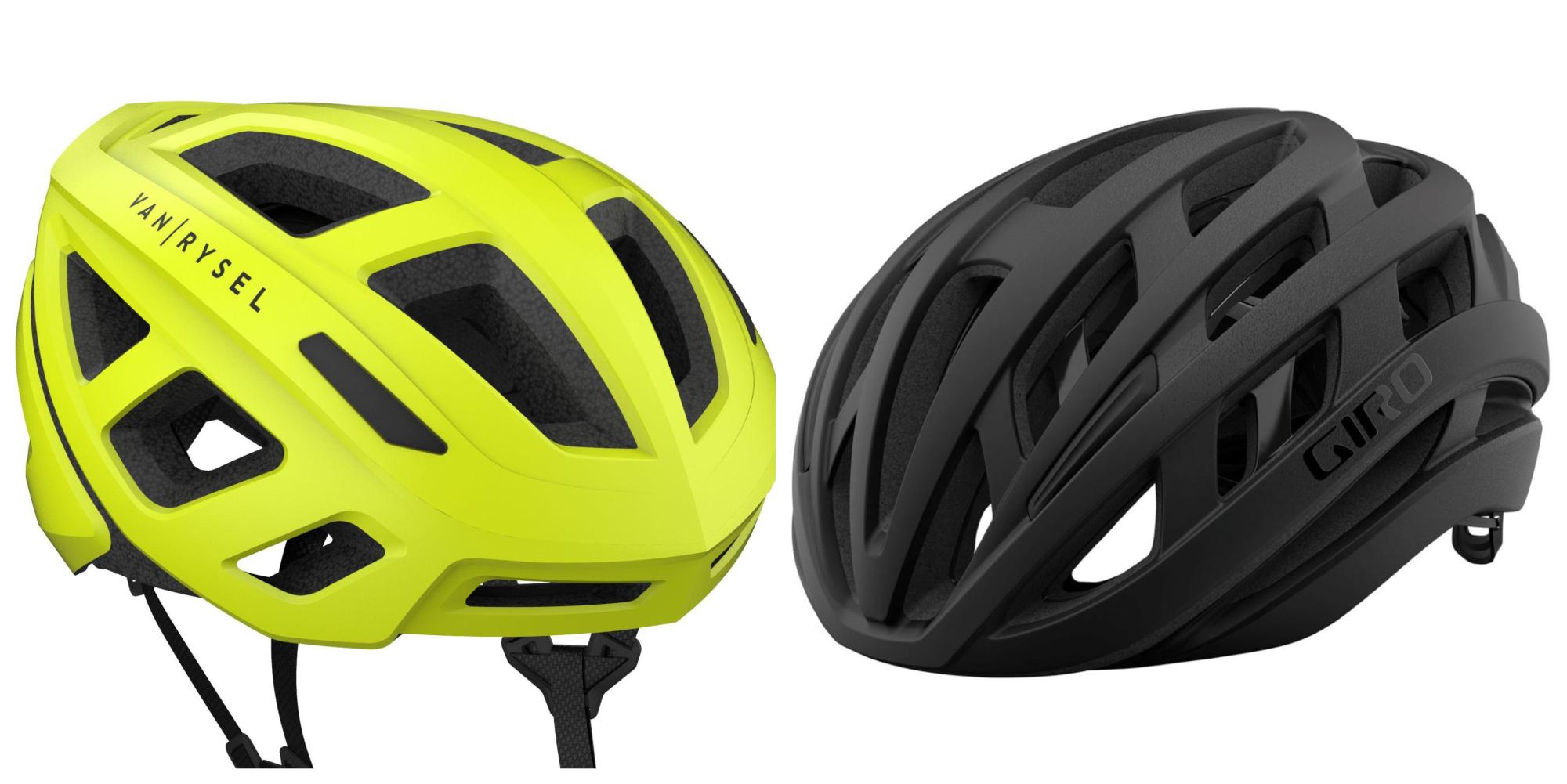
Giro’s Helios Spherical helmet uses Spherical technology, which has been developed in the Bell and Giro labs in conjunction with the MIPS team. It uses a ‘ball and socket’ design that incorporates two MIPS liners to better manage impact forces, redirecting them away from the brain by enabling the outer liner to rotate around the inner liner. Giro claims this translates to more “comprehensive protection”. It also contributes to a helmet that costs north of £200 / $250.
Given that MIPS is an additional ‘extra’ and sourced from an independent company, it’s no surprise that it adds a little cost to any helmet that uses it. That said, there are a growing number of helmets under £100 / $150 that feature MIPS technology. Perhaps the best value of these is Van Rysel’s Road R 500 MIPS. It’s a sleek looking lid that blends some aero properties with a decent level of ventilation. However, it’s a little heavy, with a size medium weighing a claimed 330g.
Other considerations
- Sizing - While premium helmets will offer a comprehensive range of sizes, usually covered across S, M, L or similar, some cheaper helmets may opt for a ‘one-size’ policy. Adult helmets typically cover heads measuring 52-62 cm in circumference. For a single helmet to do this it requires the fit retention system, usually operated by a dial at the back of the helmet, to do a lot of work. If your head is at the smaller end of the spectrum it could also mean that the helmet appears rather large on your head.
- Colours - Again, it is typical for expensive helmets to be offered in a wide range of colour choices including both matt and gloss finishes. Entry-level helmets are less likely to deliver such options, and you might find yourself flipping a coin over black or white.
- Additional extras - More expensive helmets often have additional detail. This could mean a light at the rear of the helmet, like that featured on Salice’s Gavia road helmet, or Specialized’s ANGI crash sensor (which can also be purchased separately). Sometimes it just means a bag to carry and protect your helmet

Thank you for reading 20 articles this month* Join now for unlimited access
Enjoy your first month for just £1 / $1 / €1
*Read 5 free articles per month without a subscription

Join now for unlimited access
Try first month for just £1 / $1 / €1
Get The Leadout Newsletter
The latest race content, interviews, features, reviews and expert buying guides, direct to your inbox!
Luke Friend has worked as a writer, editor and copywriter for twenty five years. Across books, magazines and websites, he's covered a broad range of topics for a range of clients including Major League Baseball, the National Trust and the NHS. He has an MA in Professional Writing from Falmouth University and is a qualified bicycle mechanic. He has been a cycling enthusiast from an early age, partly due to watching the Tour de France on TV. He's a keen follower of bike racing to this day as well as a regular road and gravel rider.
-
 'This is the marriage venue, no?': how one rider ran the whole gamut of hallucinations in a single race
'This is the marriage venue, no?': how one rider ran the whole gamut of hallucinations in a single raceKabir Rachure's first RAAM was a crazy experience in more ways than one, he tells Cycling Weekly's Going Long podcast
By James Shrubsall
-
 Full Tour of Britain Women route announced, taking place from North Yorkshire to Glasgow
Full Tour of Britain Women route announced, taking place from North Yorkshire to GlasgowBritish Cycling's Women's WorldTour four-stage race will take place in northern England and Scotland
By Tom Thewlis
-
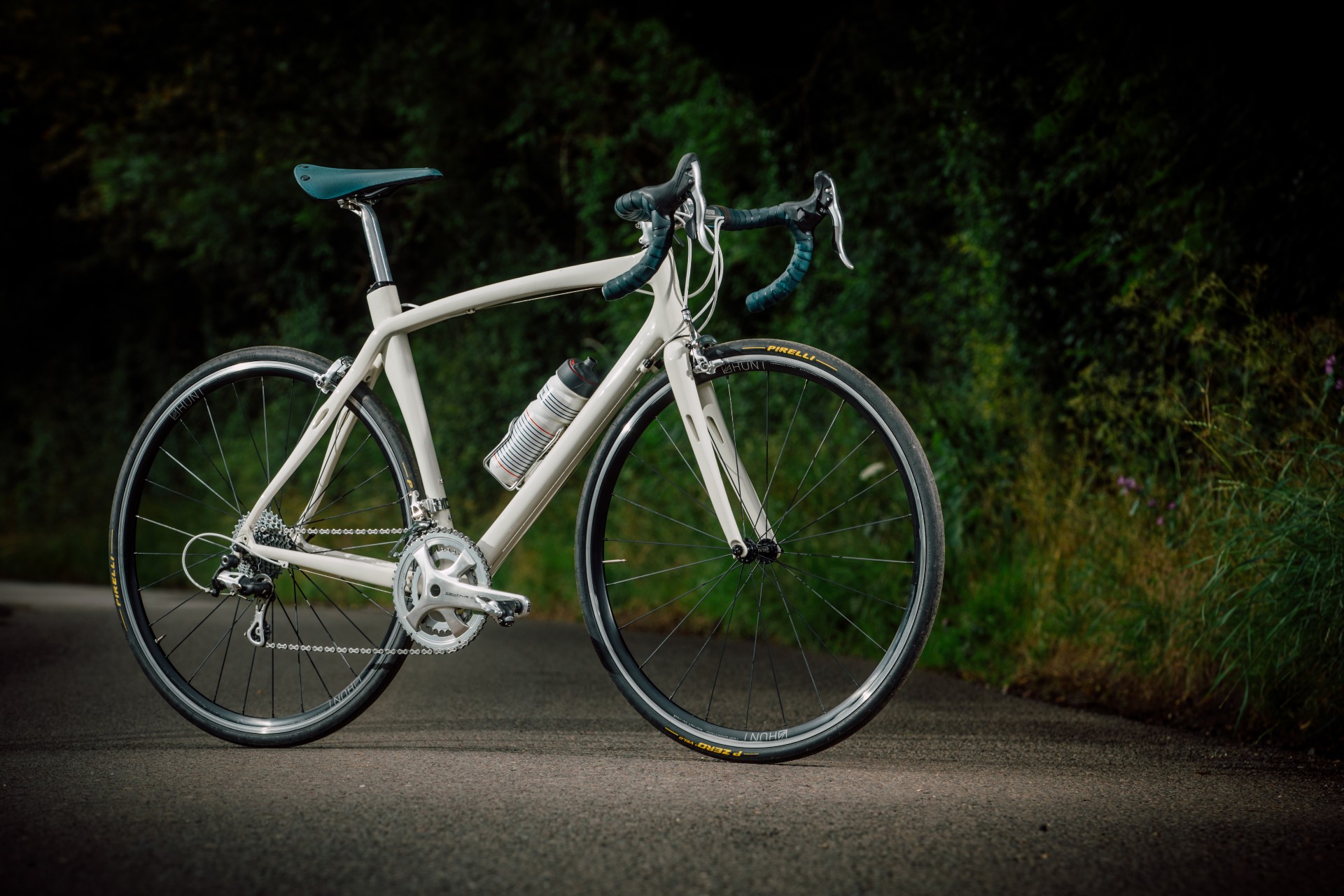 Five cost-effective upgrades to make a second-hand bike feel like new again
Five cost-effective upgrades to make a second-hand bike feel like new againWe run you through the most cost-effective ways to get a 'brand new' feeling from a second hand bike
By Stefan Abram
-
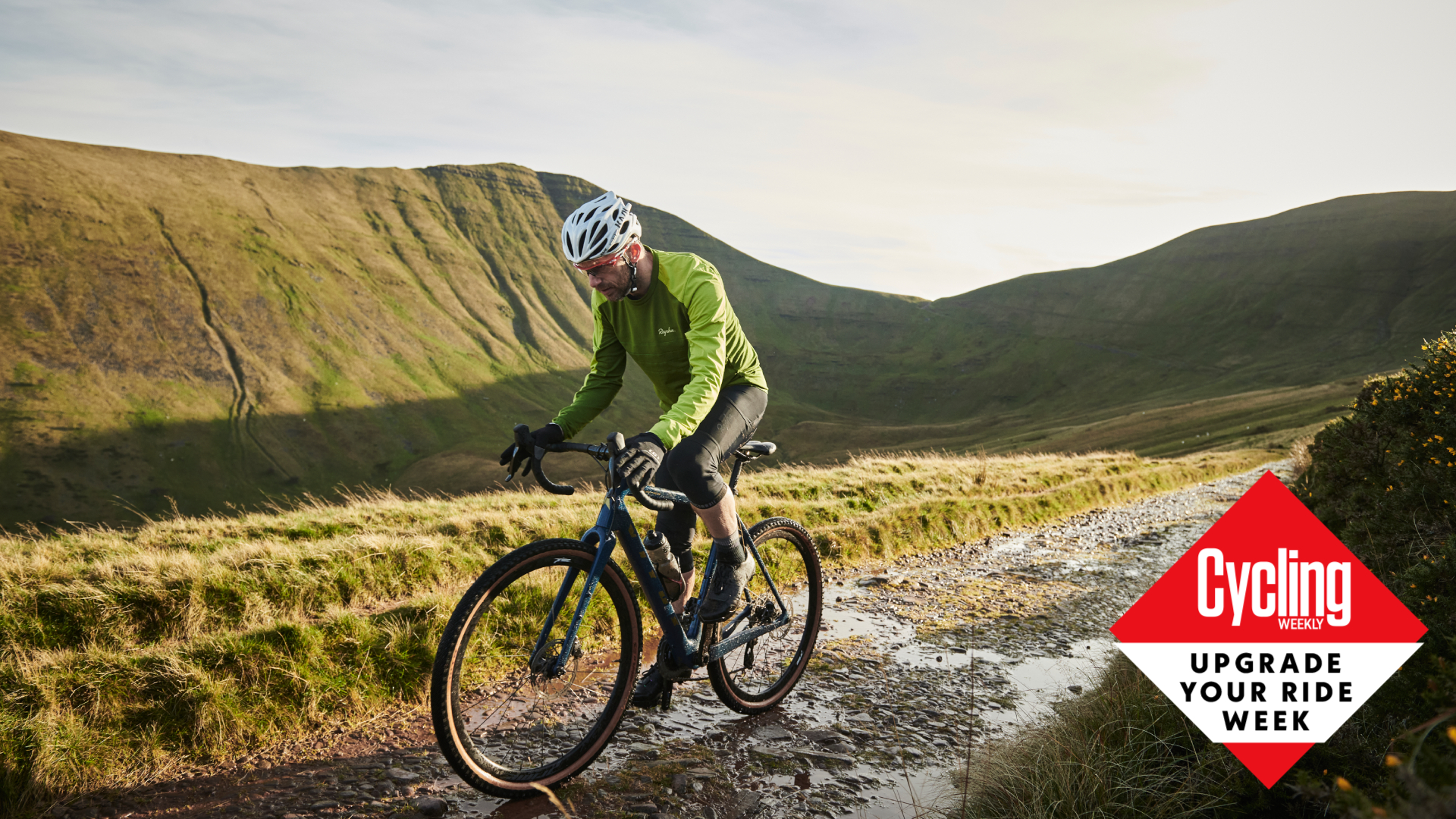 Five simple upgrades to get the best out of your gravel bike
Five simple upgrades to get the best out of your gravel bikeHere's how to to push your bike further – and go faster off-road
By Stefan Abram
-
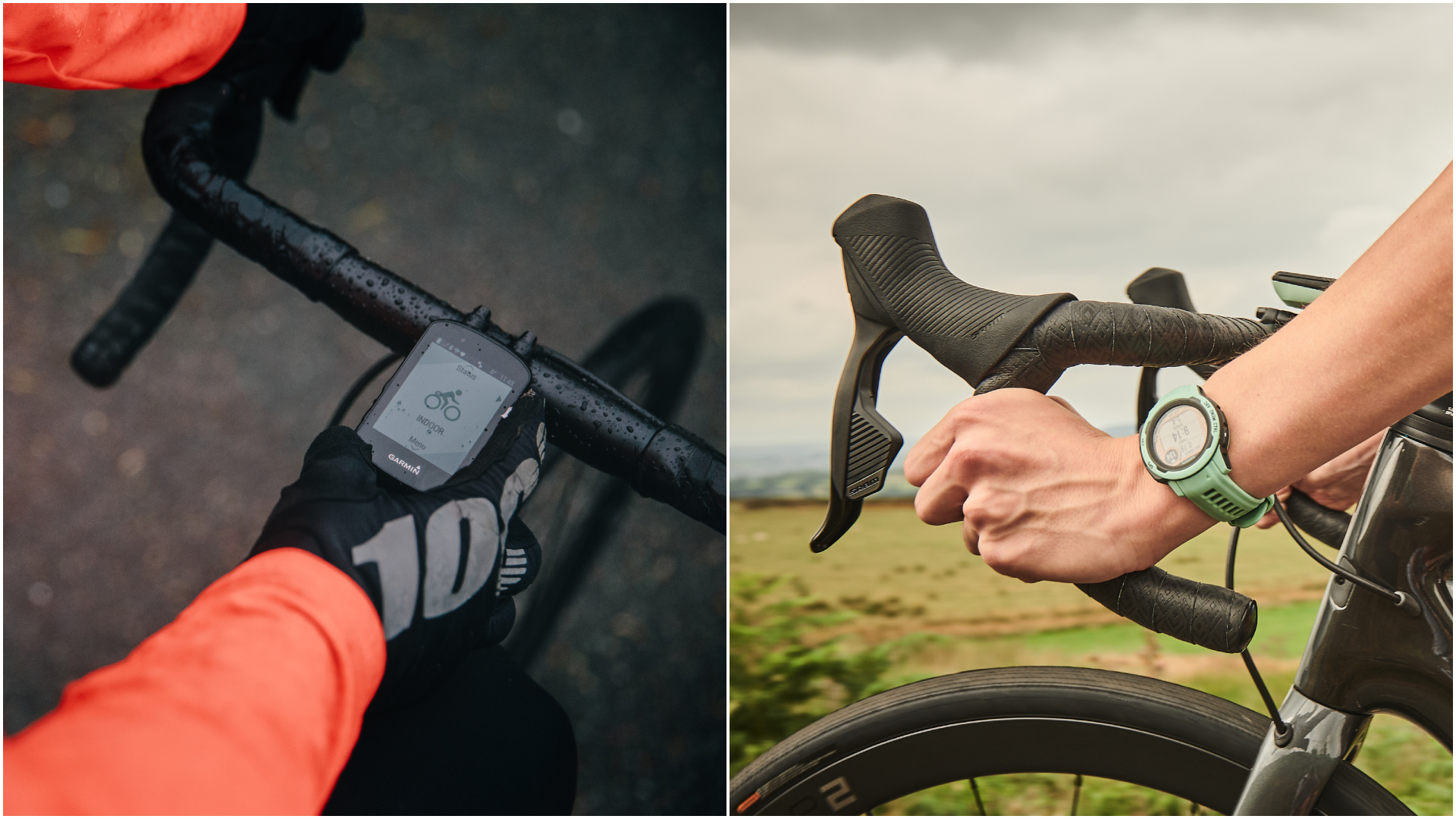 Smartwatch versus cycling computer: which is best for cyclists?
Smartwatch versus cycling computer: which is best for cyclists?Is mapping most important to you? Or would you get more out of 24/7 health monitoring? - we take you through all the pros and cons of wearables versus bike-mounted devices
By Luke Friend
-
 Help the environment; save some money – here's how to make your cycling kit last longer
Help the environment; save some money – here's how to make your cycling kit last longerSurprisingly easy ways to keep your bike gear going and going
By Hannah Bussey
-
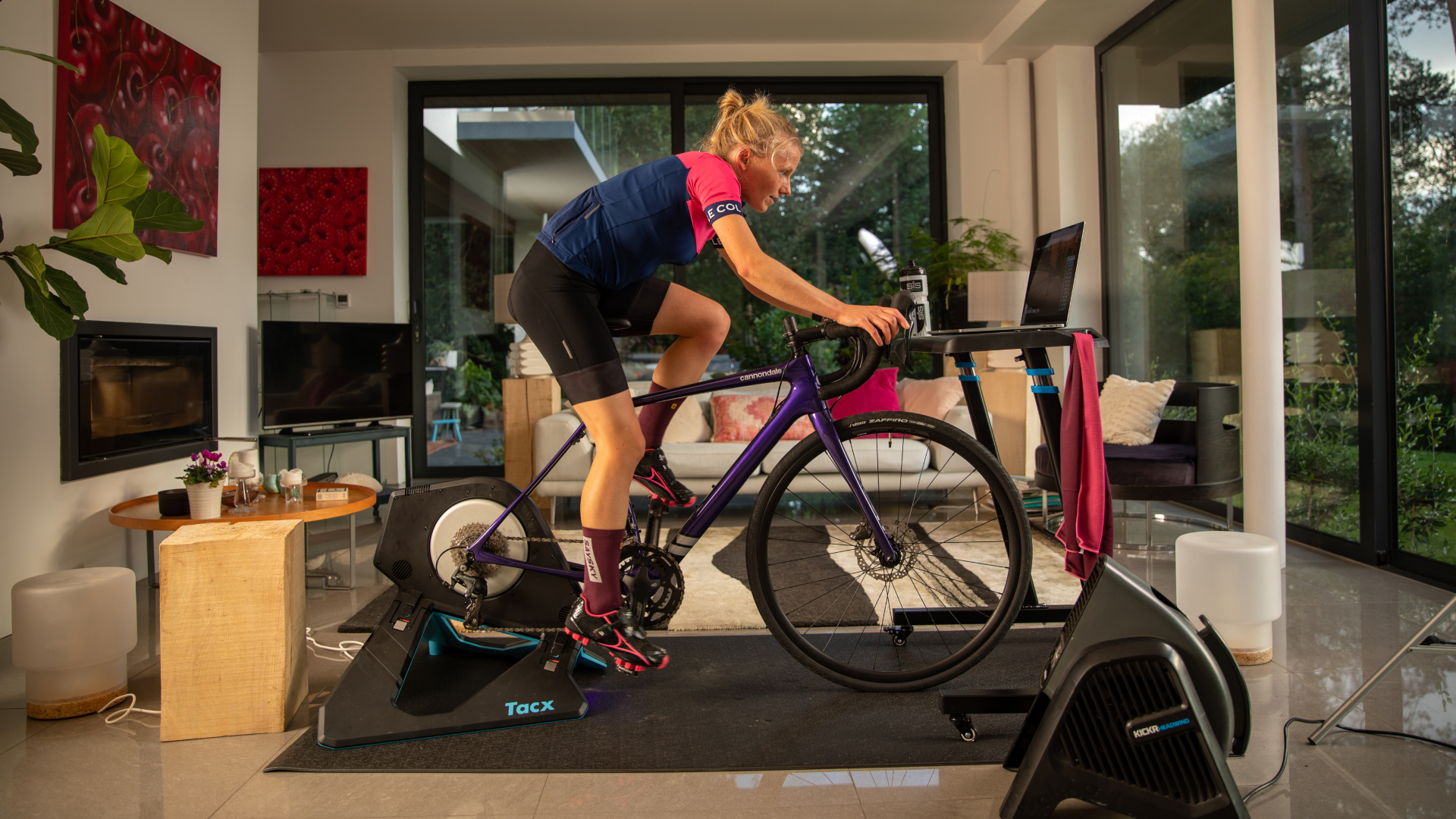 Cheap versus expensive turbos trainers: are you paying four figures for features you don’t need?
Cheap versus expensive turbos trainers: are you paying four figures for features you don’t need?Today's turbo trainers are available at a myriad of price points but what are the differences between entry level and top-tier units? We take a look at the details and their impact on the experience of riding indoors
By Luke Friend
-
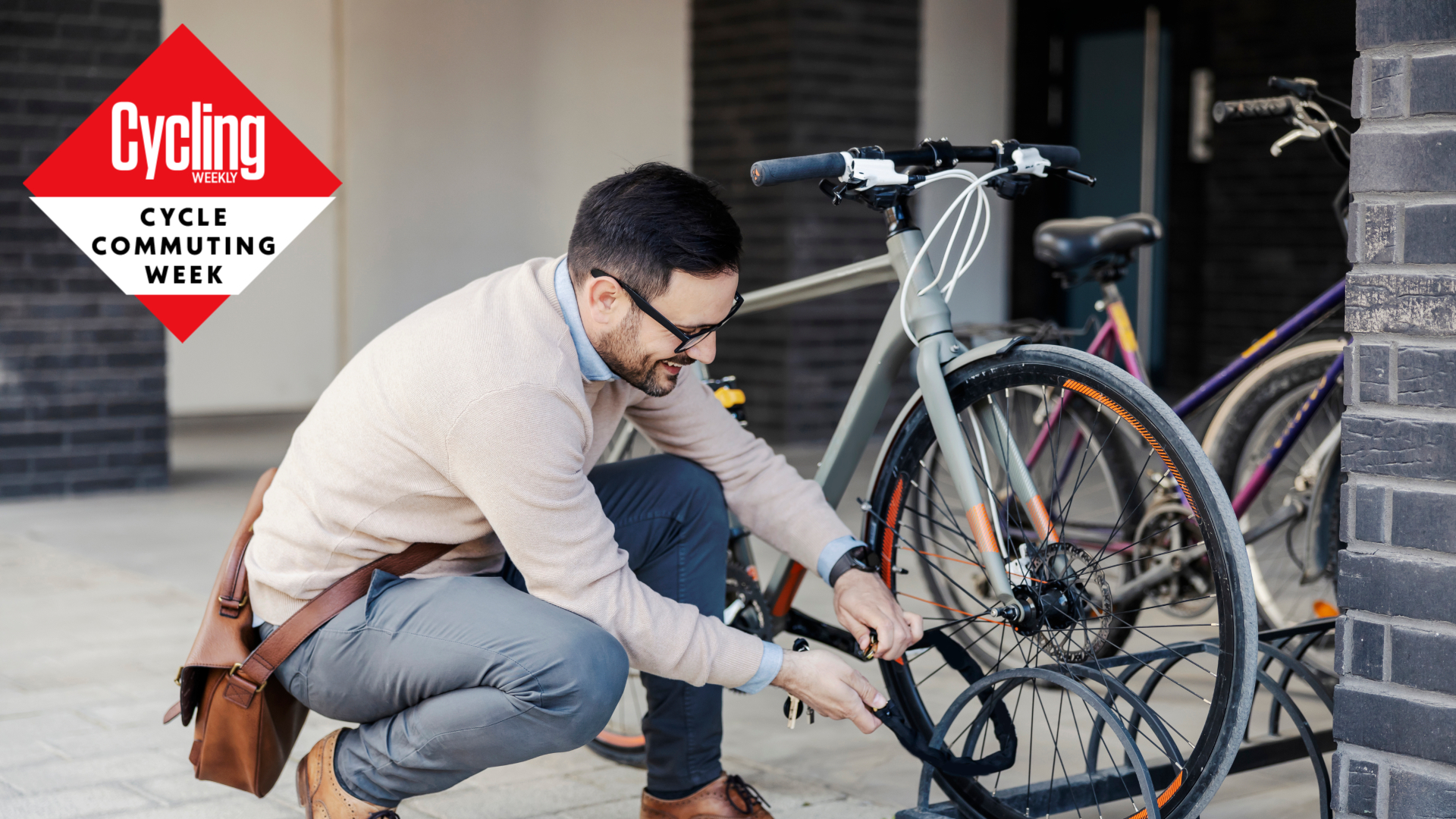 Not all bike locks are created equal, so just how much do you need to spend to protect your bike?
Not all bike locks are created equal, so just how much do you need to spend to protect your bike?Commuting to work requires a bike lock to keep your steed safe, but what are the differences between 'cheap' and 'expensive' locks?
By Luke Friend
-
 How do cheap sunglasses stack up against those rocking three-figure price tags? We explain the key differences
How do cheap sunglasses stack up against those rocking three-figure price tags? We explain the key differencesNot only does a set of cycling sunglasses shade your eyes, they provide a mini shield against bugs and debris. Many cyclists won't go out without them – but are expensive models really any better?
By Luke Friend
-
 How to save 10 watts and a lot of money by doing your own real-world aero testing
How to save 10 watts and a lot of money by doing your own real-world aero testingNo wind tunnel, no problem: a quiet stretch of road, a free app and a scientific approach is all you need
By Tom Epton